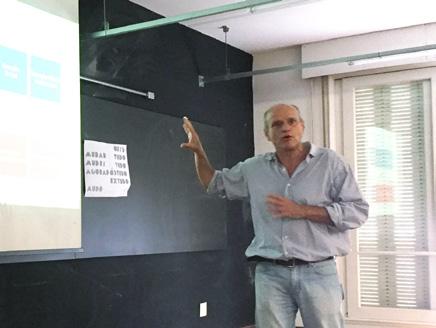
2 minute read
Zoning
The speaker talked about his generations’ challenges and possibilities to build community in informal settlements. Possibilities include a solidary economy, internet, and community resources for residents. Providing multifunctional space that offers areas for residents to gather for social and cultural activities is also important. Incorporating themes of social, environment, culture, and everyday necessities into an area are ways for residents to use the space and care for their environment simultaneously. These themes span across favelas around Brazil and help negate the negative connotations that are often associated with them.
ZONING
Taubman College team had the opportunity to learn about a very peculiar type of zoning in Brazil that targets social and informal housing. The team heard from the expert Daniel Montandon on Brazil’s and São Paulo’s zoning regulations. Since the 1960s, urban growth in São Paulo has furthered the
87 Mario Reali. division and marginalization of the population. In response, urban reform has played a major role in the recent evolution of the national agenda. In 1988, urban reform took shape in the Federal Constitution, which incorporated a provision regarding the function of property and land use in an effort to reduce segregation in many of Brazil’s cities (Reali, 2017). As early as the 1980s, municipalities have considered using zoning as a tool to reduce segregation, specifically through Special Zones of Social Interest (ZEIS). In the 1990s, some cities began incorporating ZEIS zones into their zoning ordinances. In 2001, ZEIS appeared in the City Statute (Federal Law 10,257). One year later São Paulo introduced ZEIS into the Master Plan (Municipal Law 13,430/02). It was later revised in the 2014 Master Plan and then improved in the Zoning Law in 2016 (Montandon 2017). Although these legal documents addresses social injustices, social movements continue to fight to make urban reform more accessible (Reali, 2017).
Within ZEIS zones, land use is categorized two different ways depending on occupancy. In occupied areas, ZEIS zones guarantee tenure for residents in irregular (informal) settlements until slum upgrading or an urbanization plan is created. In vacant areas, ZEIS zones are reserved for social housing. There are five different types of ZEIS zones. ZEIS 1 is used to regulate occupied areas and ZEIS 2 through 5 regulates vacant land. Ocupação Anchieta is located in a ZEIS 4, meaning it falls under the vacant land category and is situated in areas of protected water sources. More specifically, the 2014 Strategic Master Plan designated the region that includes Ocupação Anchieta as an Urban Vulnerability Reduction and Environmental Recovery Area (Montandon, 2017).






